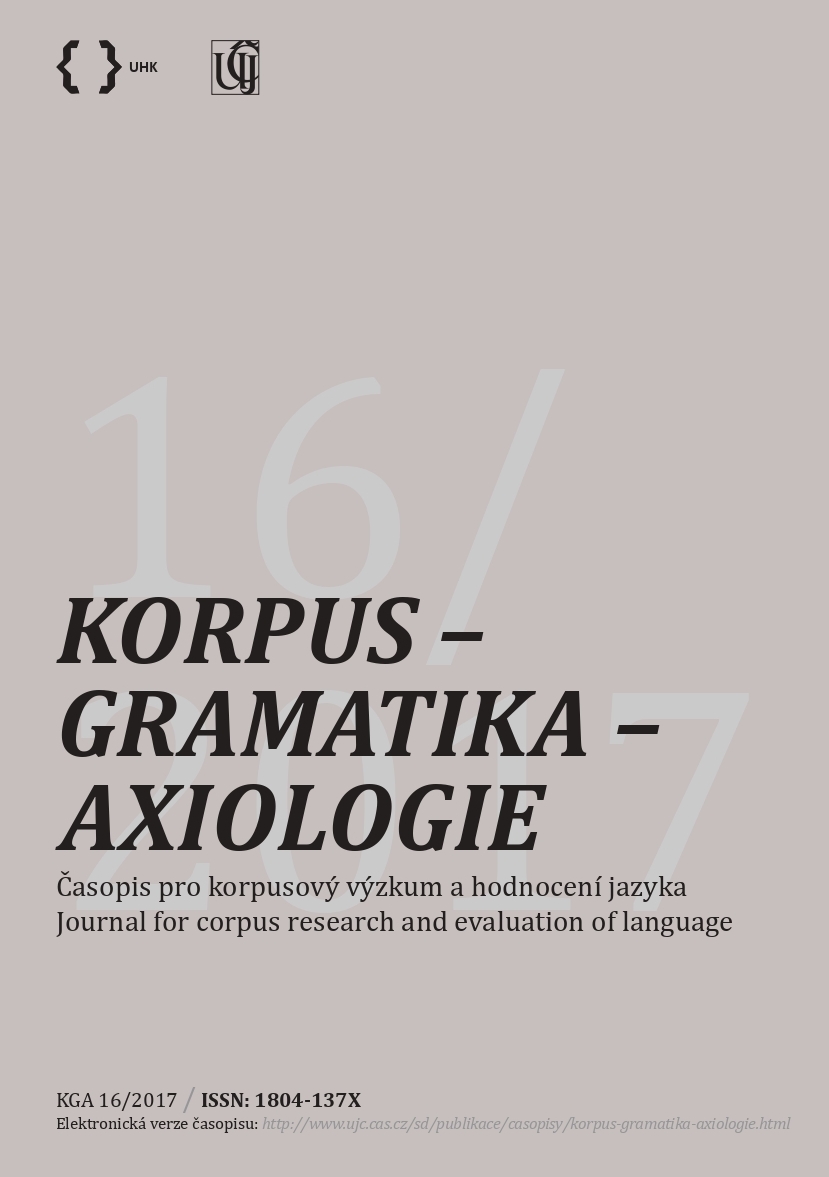
We kindly inform you that, as long as the subject affiliation of our 300.000+ articles is in progress, you might get unsufficient or no results on your third level or second level search. In this case, please broaden your search criteria.

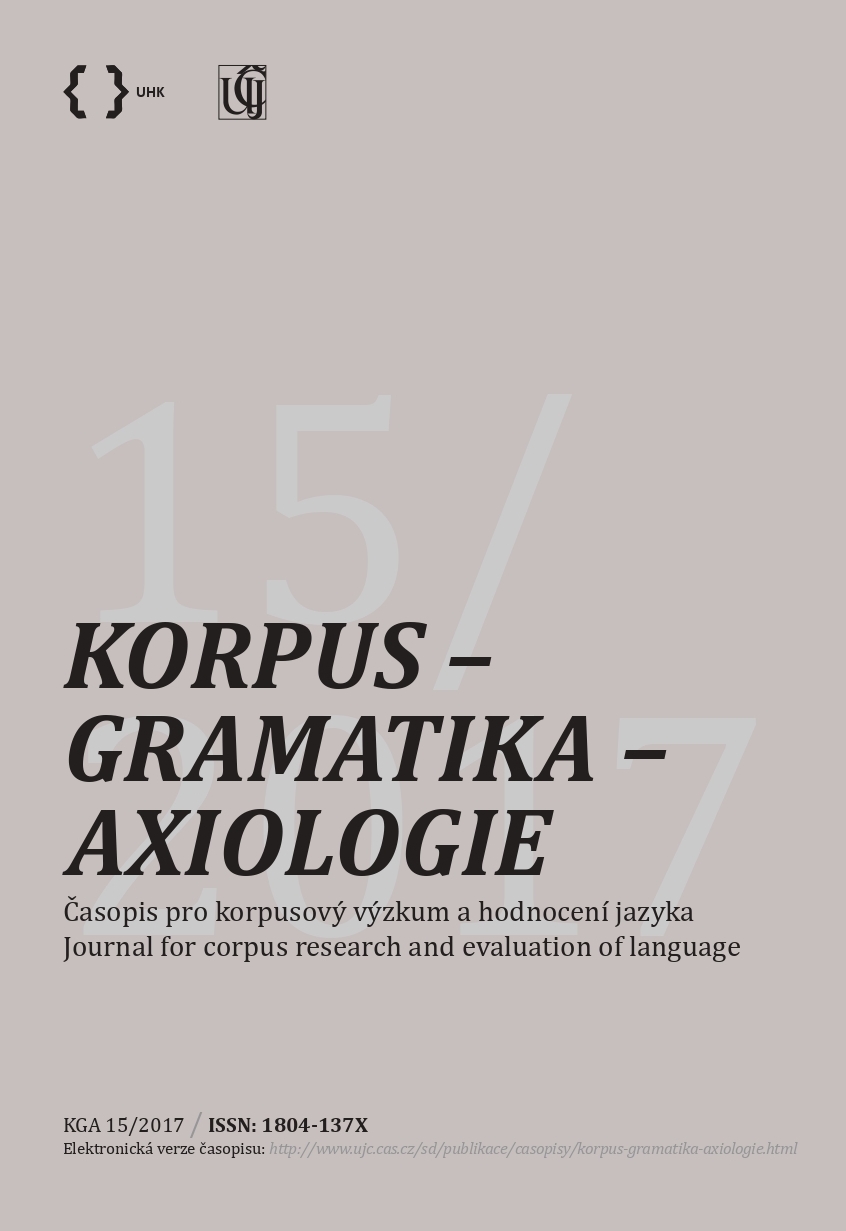
The paper tried to answer the following research questions: What are meanings and functions of the Czech word tak [so in English] in spoken texts used in contemporary media? How is the word tak incorporated into a syntactic structure of a turn? Two TV programmes included in the Dialog Corpus were chosen to be analysed: Otázky Václava Moravce (a very formal discussion with politicians hosted by Václav Moravec) and Uvolněte se, prosím (a very informal, spontaneous talk show). The chosen programmes were intentionally quite different; they noticeably differed even in the total numbers of the tak occurrences caught in them: 74 occurrences in Otázky Václava Moravce vs. 149 occurrences in the talk show Uvolněte se, prosím. In the talk show, we identified an extremely high occurrence of the word tak as the preparative particle as it is called, and even a higher number of this word was found as a simple connector. The connector tak placed at the end of a line appeared only in the talk show. In both programmes, the word tak was commonly used to express various syntactic relations, most often expressing conditions and consequences. The examples often indicated that the word tak might be the only word expressing such relations.
More...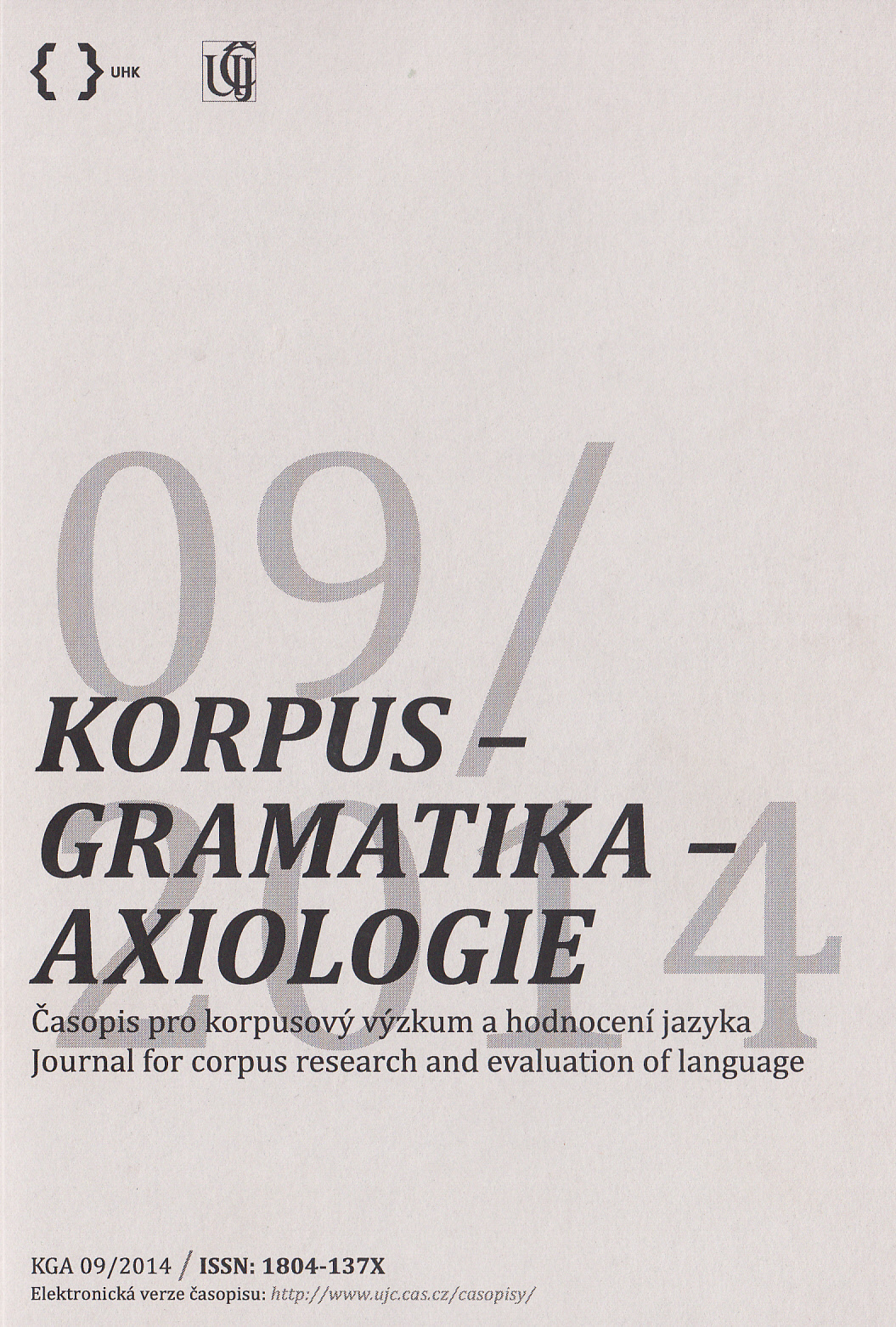
Jakub Arbes was a well-known Czech writer who died in 1914 and is known as the creator of a specific sort of short novel, called the romaneto. His work, however, is written in a language which is not completely understandable to the contemporary reader. Between the last decade of the 19th century and the first two decades of the 20th century the Czech literary language changed rapidly and significantly in its morphology (e.g. the forms of noun cases), syntax (e.g. the structure of the passive), the lexicon (the meanings of many words and the styles ascribed to them), as well as word order rules. Supposedly, the classical literary Czech language changed much more substantially than did English, French or German during this period of time. But the reception of the classic Czech literature in the public and among literary historians has not followed this evolution of language as far as the classical Czech literary canon is concerned. Contrary to evident facts, most of the public and the literary historians have resisted the need to translate this outdated system of Czech into the new system of our time. The inevitable result will be the relegation of this literature to the status of museum piece. This article is a first step on the path to a new reception of this outdated Czech literary language.
More...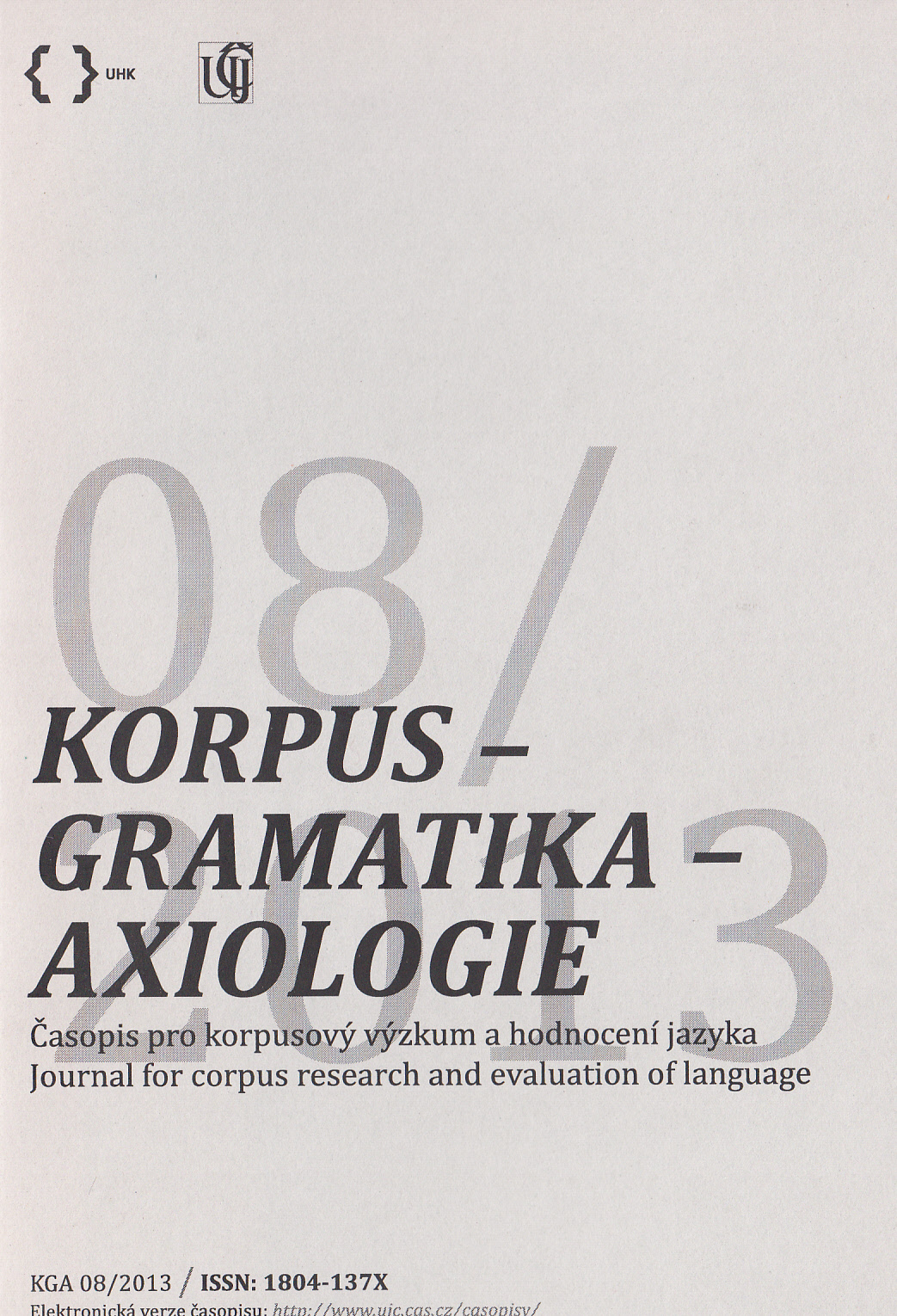
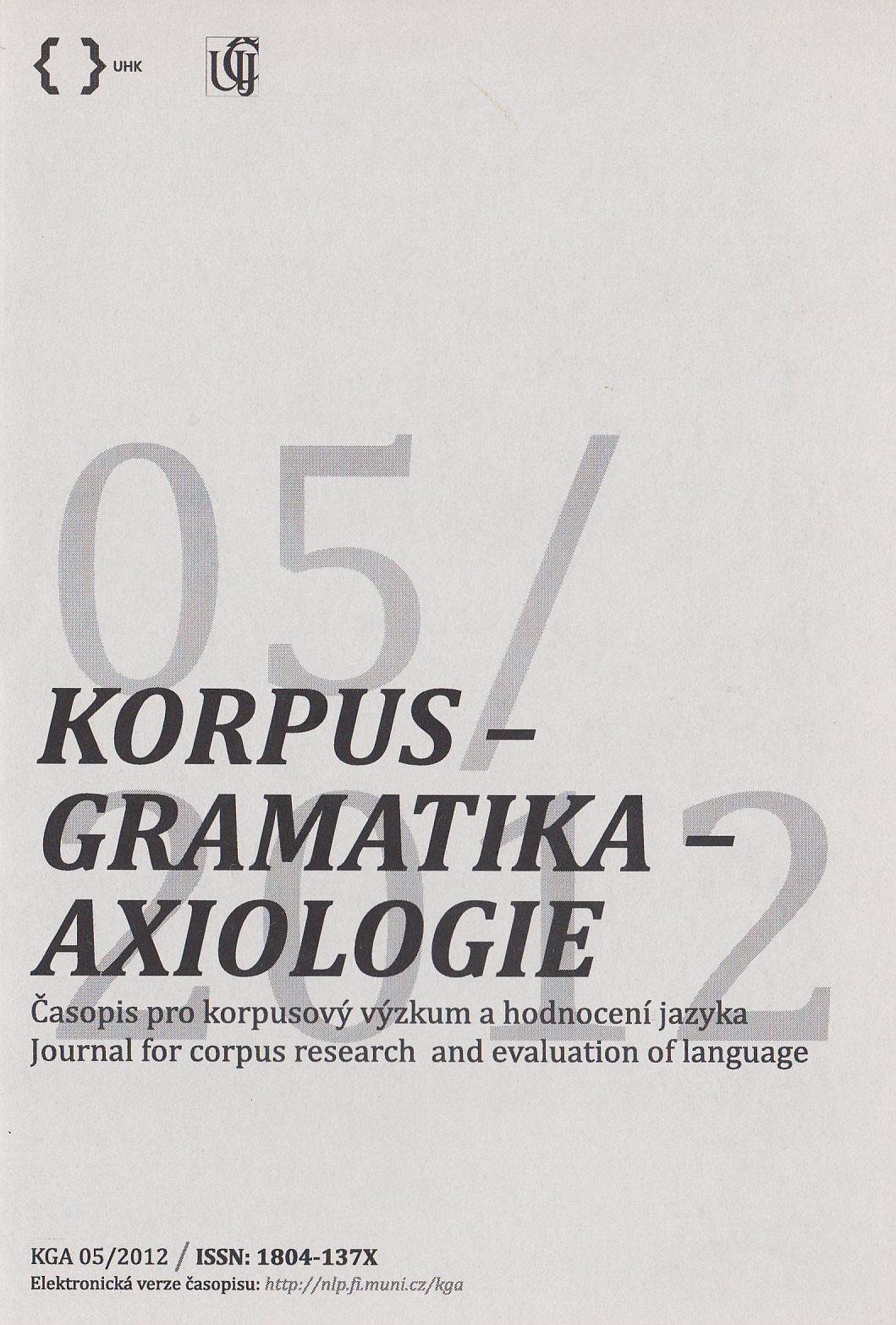
The aim of this article is to present a relatively complex linguistic analysis of the three-volume correspondence between Jiří Voskovec and Jan Werich (V+W). Focusing on the dialogic structure of these letters, its remarkable coherence and stylistic uniformity, we examine the research possibilities such text types may offer in the field of dialogue stylistics. This highly private correspondence draws attention to the transitions between written and spoken language, fluctuations between using literary and common Czech, as well as a frequent use of vulgarisms, which we interpret as a natural part of the authors’ shared idiolect. Another building block in the stylistic uniformity of the entire correspondence that is worth highlighting is the linguistic playfulness and language-based humor, including V+W’s fondness for using, manipulating, and commenting on specific set phrases, in which they also intertwine Czech and English. Although English holds a prominent position both in terms of frequency of use and the variety of expressions, the letters actually display features of multi-lingual texts; this quality comes out also in the form of stating the authors’ opinions about Czech (or other languages). The multi-lingual flavor is not far from issues of intertextuality, which manifests itself in the form of a variety of quotations, paraphrases, references, or ad-hoc created fake proverbs. Another part of our analysis concerns V+W’s creativity in word-formation (especially on the part of Voskovec), as well as various grammatical phenomena. In morphology, the texts show a conspicuously high frequency of participles and the archaic short-form adjectives; in syntax, we observe the stylistic function of certain passive constructions, causativization of non-causative verbs, special kinds of ellipsis, and idiosyncratic patterning in marking information structure.
More...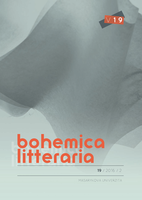
The paper inquires into the modes of explication and practise of description at schools, appreciating the particular methods of stylistic practise suggested by Zdeněk Kožmín in Tvořivý sloh (Creative stylistics, 1995).
More...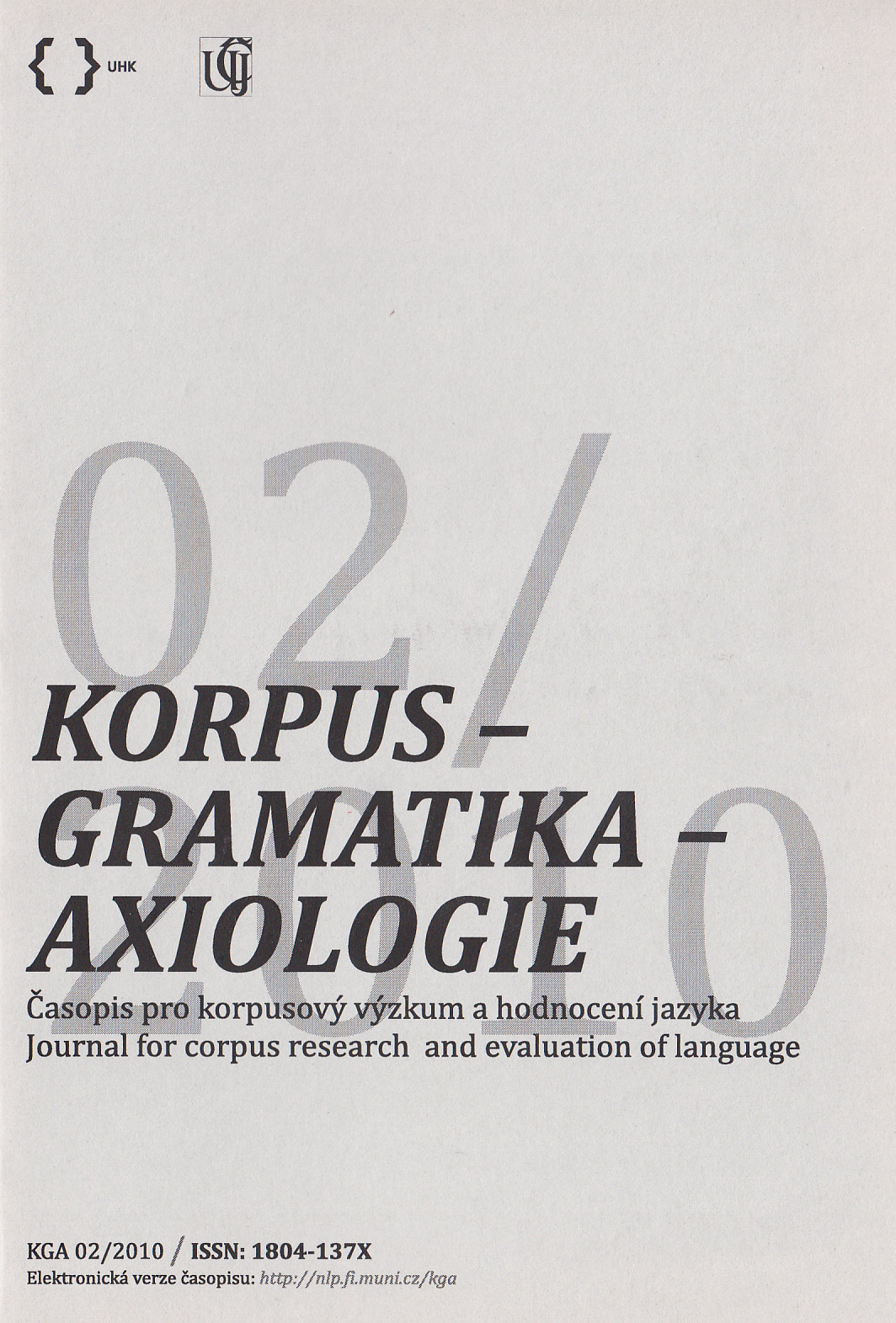
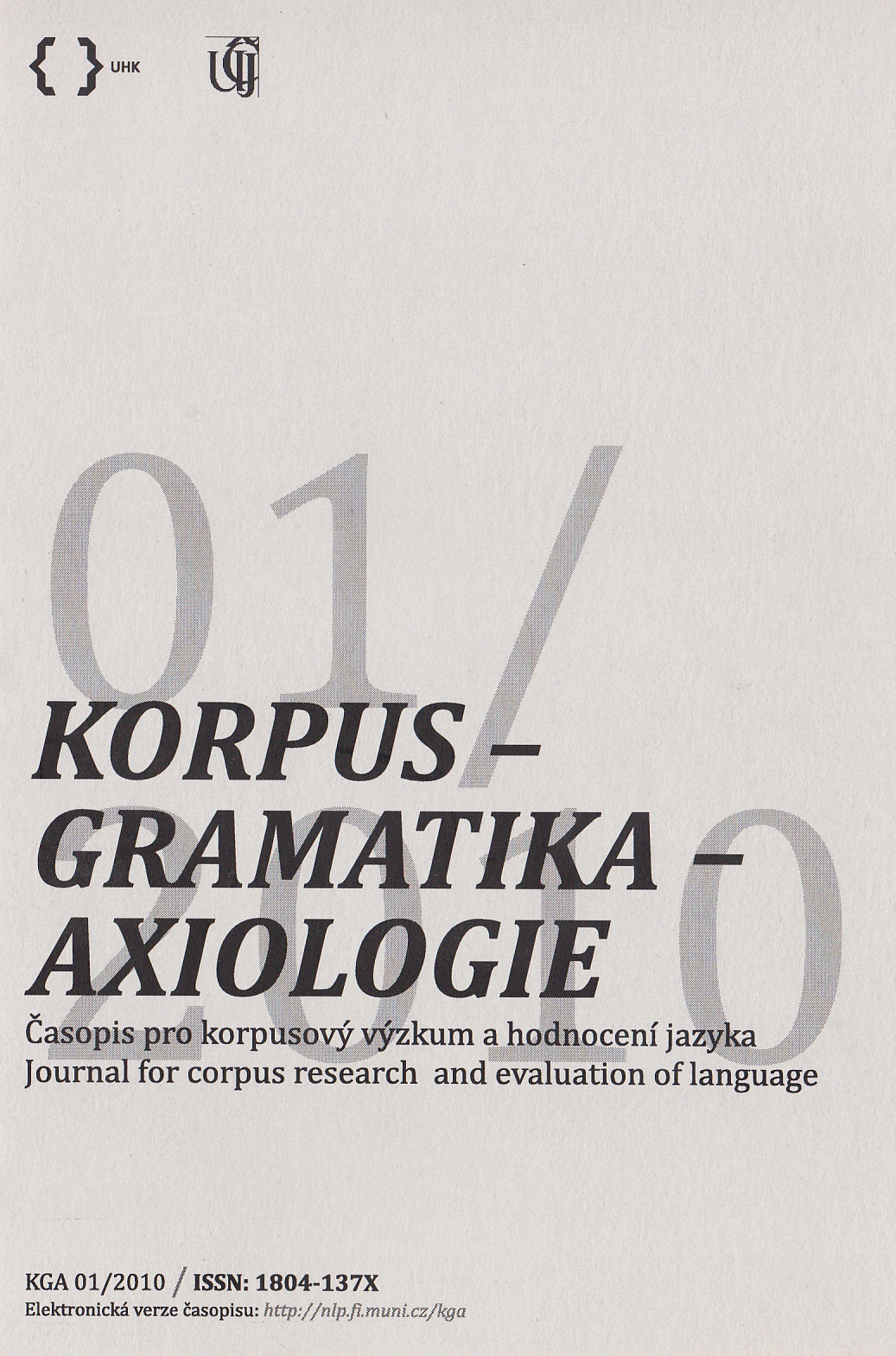

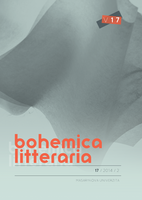
In the first half of the 1970s Bohumil Hrabal was not allowed to officially publish his texts; yet it is the time when he wrote a number of his most critically acclaimed works. Obsluhoval jsem anglického krále (I served the King of England) and Příliš hlučná samota (Too Loud a Solitude) are the two probably best-known of them and often translated into other languages as well. From the genre point of view, both texts diverge (the narrator in Obsluhoval jsem anglického krále is markedly narration oriented, while the narrator in Příliš hlučná samota can be described as contemplative and reflective), but from the stylistic point of view, important parallels and analogies can be identified. One of them is Hrabal’s unique composition technique using „long sentences“, which he himself called „stream writing“. The study discusses the usage and different aspects of the technique.
More...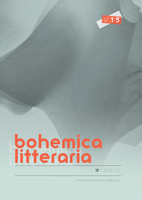
Dans son poème Le conte de fées (de son recueil Le royaume du monde, 1911) Otokar Fischer met ľaccent sur son incipite, explicite, vers central et rime. Le poème entier est basé sur le principe de couleurs. L’ étude présente les recherches de la couleur dans l‘oeuvre littéraire d’Otokar Fischer.
More...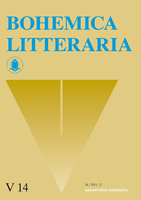
Anthropomorphized nature is the frequent thematic reservoir of intentional children’s literature because clearness, conciseness and emotional effectiveness of life stories of personified animal characters suggest themselves as the enhancement of the parallel between events in the countryside and in the human society. Insects as the smallest representatives of the animal world then resemble, through their tininess and vulnerability, the “ant” optics of a small child appearing in the adult world. Using examples from the Czech literature for children since the 19th century till the present, the paper deals with the ways in which insects are represented, from parallels with the human society to parody shifts.
More...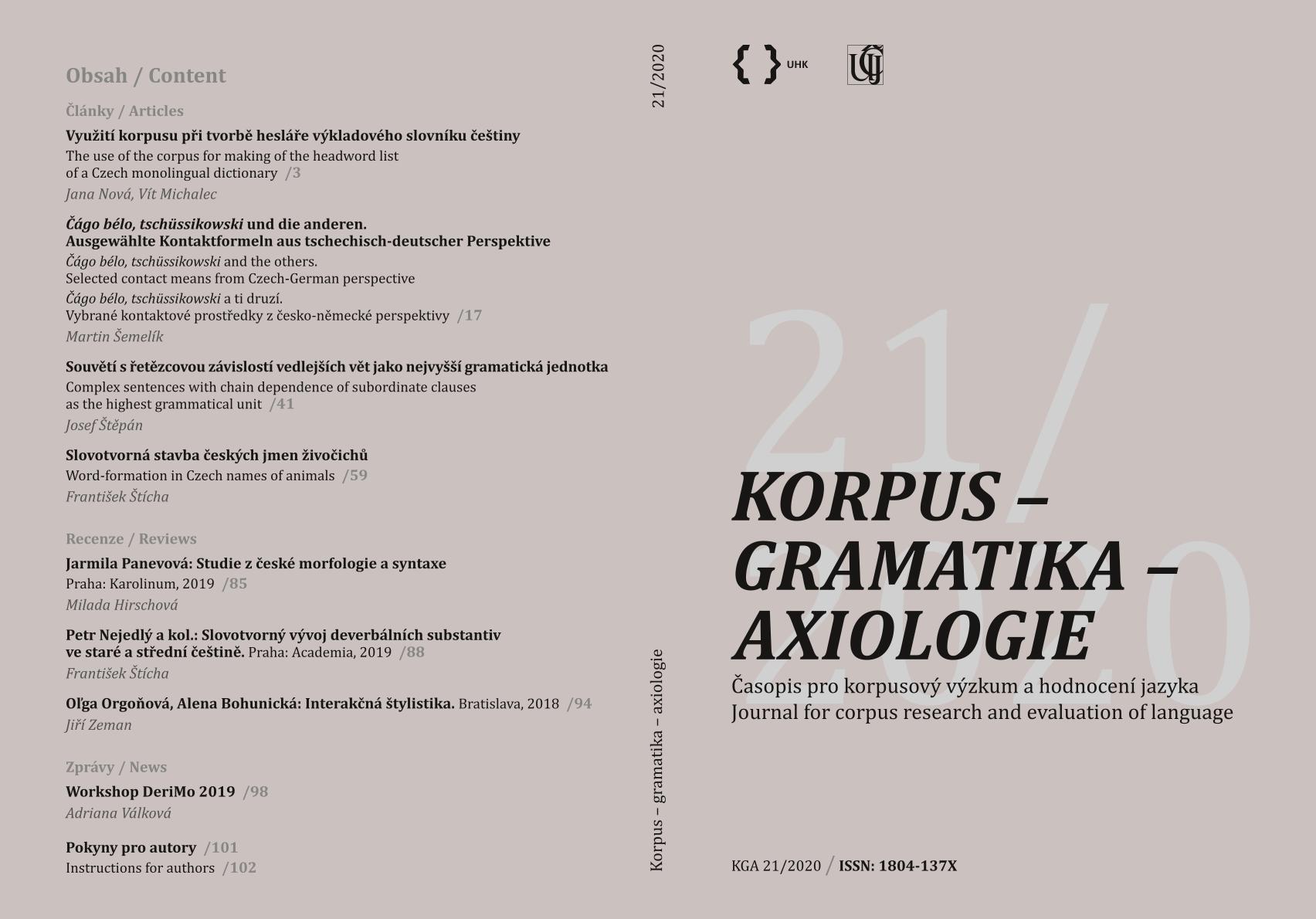
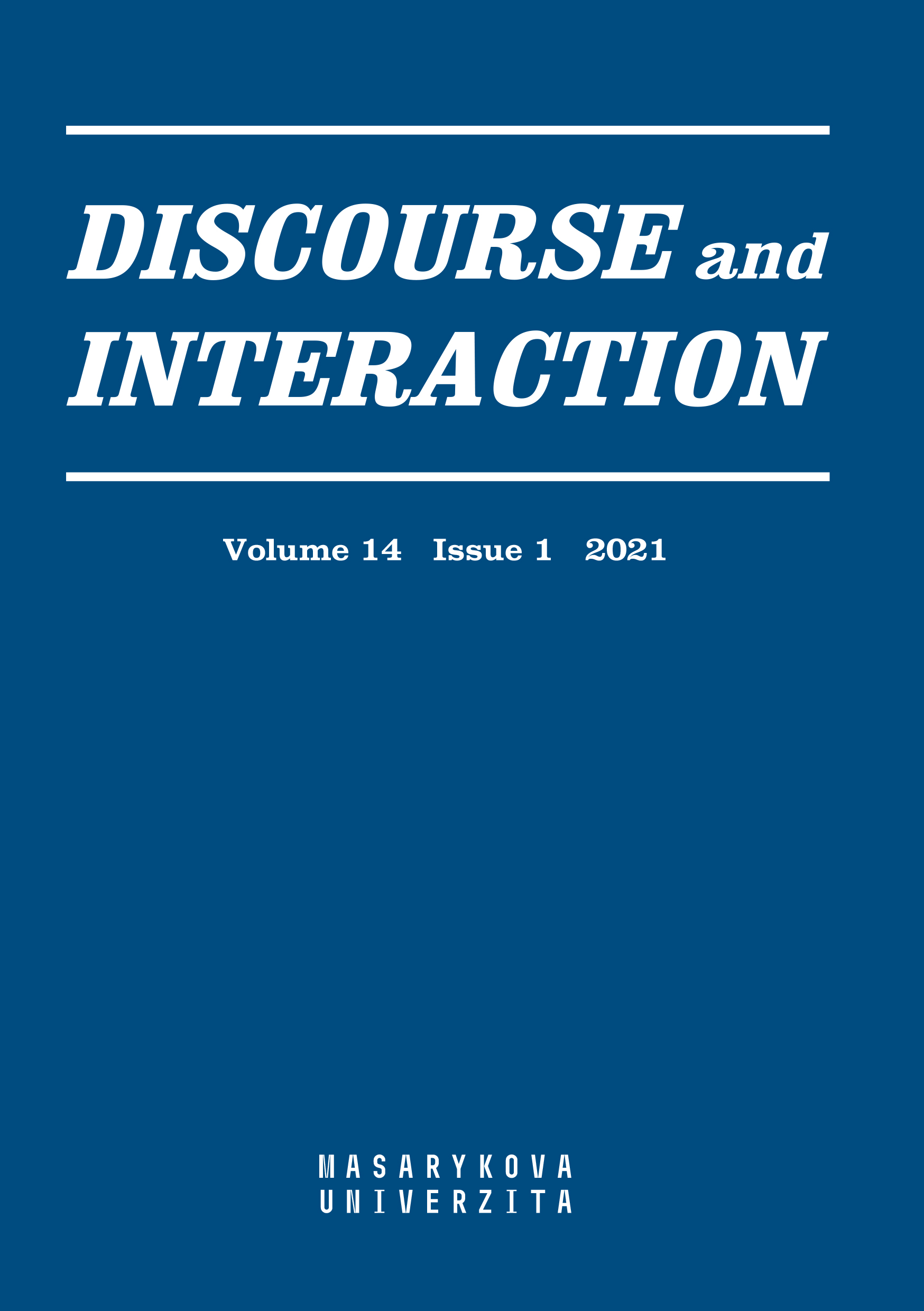
Research article (RA) abstracts are not mere shortened versions of the research article content but constitute a separate genre of academic discourse with its own specific features, one of them being its interactional nature. This paper explores interactional metadiscourse markers occurring in RA abstracts from the diachronic perspective. The main focus is therefore on variation and change in the use of these linguistic means since it may be expected that their distribution could evolve over time, even though scholars follow specific writing conventions when writing RA abstracts. Connected with this is the question whether growth in the mean length of RA abstracts has led to any rhetorical change. Providing an answer to this question is another aim of this paper. The study is based on a corpus of 96 RA abstracts from the field of Applied Linguistics published in a prestigious linguistic journal entitled Journal of Pragmatics over the course of the last 35 years. The theoretical framework followed here is the taxonomy of metadiscourse proposed by Hyland (2005a), which is particularly convenient as it offers a pragmatically-grounded method of analysing interactional metadiscourse markers in academic texts. As the results suggest, the distribution of interactional metadiscourse markers has undergone diachronic changes, e.g. in the use of hedging and boosting devices, confirming the dynamic character of this often overlooked genre of academic discourse with regard to its interpersonal aspects.
More...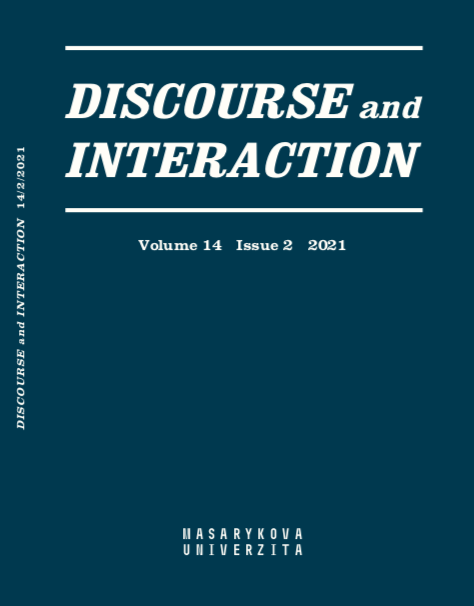
Religious discourse represents an area of human communication in which persuasion plays a vital role; religious texts seem to be essentially related to the ultimate objective of religion: to create, mediate and legitimise ideology in order to persuade the reader of the veracity of the religious doctrine (Fairclough 1989, Cotterell & Turner 1989: 26-33, van Dijk 1998: 317). The paper seeks to investigate the persuasive strategies and linguistic means employed to convey persuasion in English Protestant sermons. The analysis focuses on the rhetorical role of pathos, which is purposefully evoked by the preacher via wilful employment of affect and emotions. Attention will also be paid to the blurred borderline between the intentional use of sentiment and sentimentality, and manipulation.
More...
The present study looked closely at the niche establishments in the introduction sections of English research articles written by Thai authors and published in local Thai journals and compared them to those found in introduction sections written by non-Thai authors published in international and high indexed journals. Each of the two corpora contains forty introductory sections. The analysis was based on the frameworks of Swales (2004) and Lim (2012). It was found that the use of niche establishments in the international corpus was higher than that in the Thai corpus. In the Thai corpus, “Stressing insufficient research” was the highest strategy, but “Revealing methodological limitations” was completely absent. It is expected that the results will provide practical guidance for novice writers to write their research introduction sections with informative and convincing niche establishments and, to some extent, the results should also benefit English writing classes, especially in Thailand.
More...
This paper explores how hybrid discourse, instantiated in talk and interaction, can be shaped not only by a situational context (TV panel show) and cultural context (TV’s increasing democratisation of laity), but also by human volition in pursuit of recognizable to others and allowed within the confines of the setting. It does this by examining the emergence of context in light of a non-mainstream hybrid and reflexive activity. Specifically, it examines a non-normative interview format that has arisen in contemporary broadcasting through the analysis of three transcribed segments which were taken from two key episodes of the BBC’s flagship political program: Question Time. Using a range of analytical concepts from symbolic interactionism, pragmatics, and conversational analysis, such as frames and footings, activity types, discourse types, and turn-taking, the analysis shows how institutional (political) and non-institutional (normative) practices can come together in the pursuit of individual goals and contemporary media’s goal for increasingly partisan journalism and confrontainment. Overall, the paper highlights the importance of a multidimensional approach to context, whereby meaning both emerges from and is constitutive of the forms and functions of an activity’s discourse, whilst further highlighting the role of hybridity in contemporary discourse.
More...
As one of the official languages of the Philippines, English predominantly figures in the domains of education, government, and the judiciary. This reality has always put English at the top of the linguistic ladder, relegating local languages to lower ranks. This scenario appears to be evident also in the domain of the church. In this paper, I investigate signs posted within the compound of a major Catholic church located in the Philippines in terms of types and language use. Informed by linguistic landscape concepts pioneered by Landry and Bourhis (1997), Spolsky and Cooper (1991), and Ben-Rafael (2009), I analyzed over a hundred signs in the religious linguistic landscape, which I call ‘churchscape’. Findings show that English dominates in the churchscape as a language of communication and language of tourism while local languages such as Filipino and Pangasinan assume a secondary role in the churchscape. This study affords us an interesting view and alternative understanding of multilingualism as a phenomenon through the churchscape in question.
More...
The article highlights the problem of structural configuration of the representation of polymentality of the textual world. It focuses on the problem of polymentality (ambiguity) of the text. It is proposed to address it in the context of psycholinguistics and cognitive linguistics. On that ground, the study substantiates the figure-background relations as a necessary characteristic of the manifestation of the author's sensorics. Such an approach allows not only revealing cognitive mechanisms that underlie polymentality of the literary text but also systematizing the structural configuration of its representation. The dynamics of figure-background relations (as a way of cognition) is fully manifested in the author's sensorics, often performing certain communicative tasks. The identification of common mechanisms of specificity of the interaction of figure and background in the interpretation of text meaning promotes the use of psychological approaches. The last represent the process of formation and perception of a new meaning as a process of self-organization of a complex system. The results show that the problem of the structural configuration of the representation of the polymentality of the literary text can be solved through the psychological analysis of the author's sensory in terms of figure-background relations in the gestalt-psychological discourse.
More...